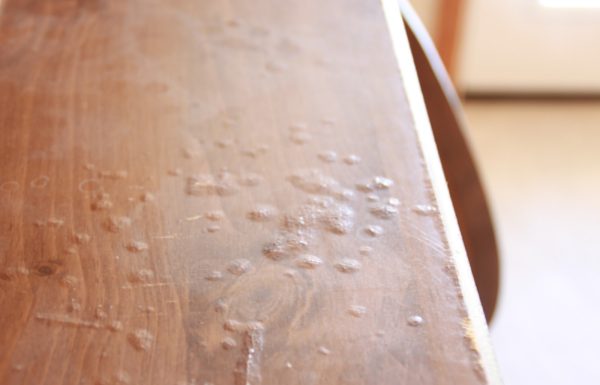
There are many different kinds of furniture that can become damaged due to water. The first thing that you should do after finding out your furniture has been damaged is to stop the flow of water so it doesn’t spread and continue damaging other parts of your house. Once you have stopped the flow of water, then it’s time to start drying out any pieces that have already been damaged by water.
What are the causes of swollen wood
You may have experienced this problem if you’ve ever left your wooden furniture in a damp basement or garage and forgotten about it. The condition is caused when water penetrates the surface of your wood, causing the wood cells to expand. This can cause cracks and warping—and worse yet, rot and mold growth if left untreated.
Swollen wood is a common problem. It can happen to any type of furniture and for many different reasons. Here are some of the most common causes:
1) Exposure to moisture
2) Creeping mold
3) Wood movement
4) Infestation by insects or termites
5) Moisture-related fungal growth
6) Varnish failure
7) Water damage
8 ) Chlorine exposure
9) Heat
10) Uneven drying
Remove waterlogged wood veneer
Once the loose veneer is removed, use a sharp chisel to remove any remaining adhesive. If you don’t have a chisel, you can use a razor blade to gently scrape away at the residue. Be careful not to damage the furniture underneath during this process and be sure not to bend or otherwise damage any underlying pieces as well.
Is it worth restoring water damaged furniture
In most cases, it is worth restoring water damaged furniture. If the piece was a valuable piece of furniture or a family heirloom, you should consider having it restored.
If your budget doesn’t allow for the purchase of another piece, then restoration may be worth pursuing. The last thing you want to do is throw away a family heirloom that has been passed down through generations because it’s too damaged to repair or replace.
Save a water damaged book
If you have a book that has become waterlogged and the pages have stuck together, you can try using your hair dryer to help them separate. If this does not work, then use a vacuum cleaner to draw out any excess moisture.
When it comes to saving swollen wood furniture, this is where the process differs from restoring books or other paper products. A handyman or carpenter will be able to remove the swollen wood and replace it with new lumber, but if you’re trying to save an old piece of furniture, there are some things that you should know before attempting the job yourself:
Fix swollen laminate cabinet doors
If you have a swollen laminate cabinet door, you can follow these steps to repair it:
- Remove the swollen laminate cabinet door from your home and set it aside in an area that is dry.
- Use a heat gun on the back side of the cabinet door to dry it out.
- Sand down any areas of peeling laminate, then apply new laminate over them with an adhesive layer between them for protection against future swelling problems. You may need to use a heat gun again if there are any spots where water still remains trapped inside the door, but be careful not to melt or burn through either layer of plastic!
Fix water damaged wooden floor
Water damage to wooden floors can be particularly tricky to fix. The first step is to vacuum the floor thoroughly, using a crevice tool to remove any debris that might be trapped in cracks and crevices. Then, use a hair dryer on low heat (or better yet, let it sit outside in the sun) for two hours or so until all water is evaporated from within the wood itself. At this point you will want to use a paintbrush with shellac in order to apply coats of protective sealant over your flooring. Once these are applied, give each coat at least 24 hours before applying another one. Shellac will protect your floors from further moisture damage after just one coat but if you have time once again wait 24 hours before adding another coat of shellac until they’re completely dry (at least 48 hours).
Conclusion
The best way to repair water damaged swollen wood furniture is to eliminate all moisture. Next, you should apply a clear polyurethane finish over the entire piece of furniture. This will seal in any remaining moisture and make it look like new again!

